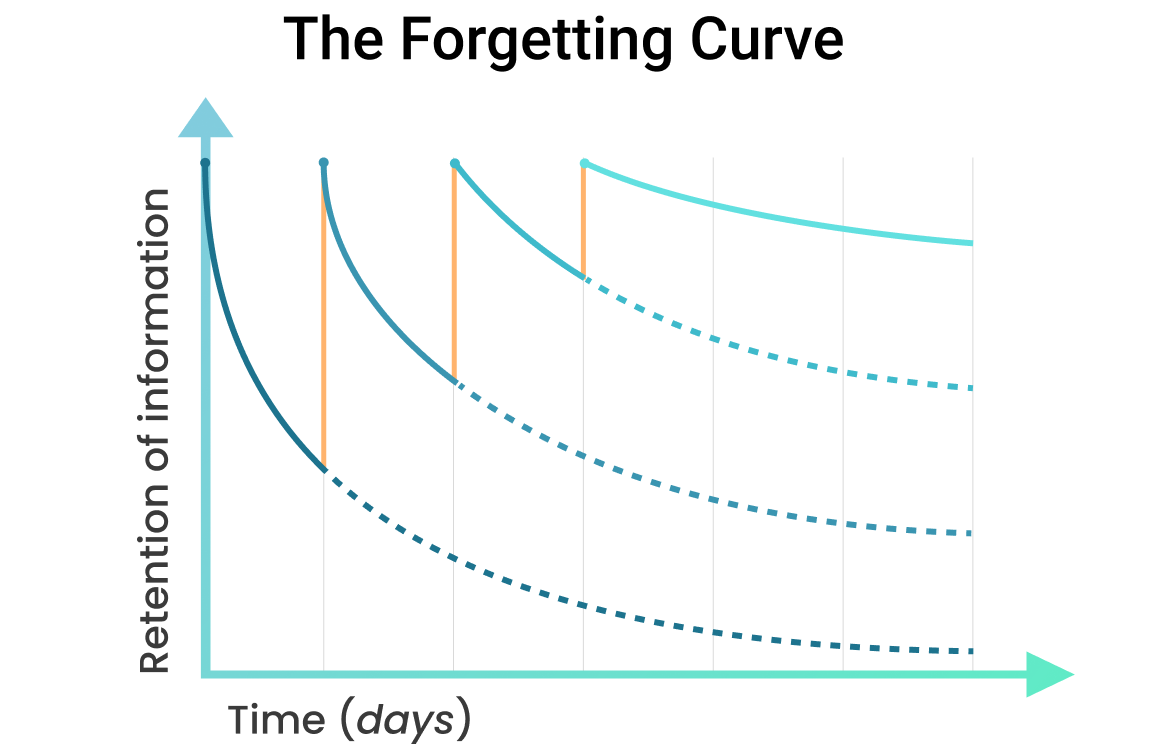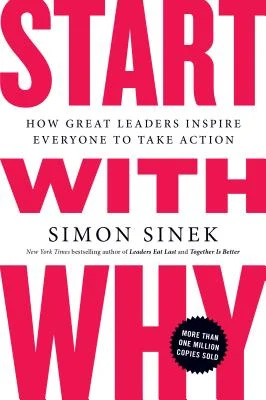Think.
Last week we talked about taking notes while reading and then returning to those notes after a short interval to consolidate them. I am on the precipice of unveiling my learning and data management system, but last week’s post generated a lot of questions, comments, and suggestions that I would like to take today to cover.
First, a quick administrative note. I always appreciate the comments on each issue of Think. Read. Write. Repeat. Many of you also email me at john@ walkingpoint.org which is also great. I recently tried something new by launching a substack chat. This provides a forum for discussion and collaboration. I’d love for you to jump in. If you are subscribed, you should have received an email about it. If you have not subscribed, please click the button below. Thanks!
It’s probably helpful, as Simon Sinek encourages, to start with why. Why am I fascinated by learning and retaining what I’ve learned?
I was spoiled in my younger years. I was fortunate enough to be relatively intelligent and have a good memory. Don’t get me wrong, I was not as good as Will Hunting, but my ability to retain and recall information was better than average.
With age and repeated blast exposure, I find myself less sharp than I once was and, as I am unwilling to give in to the slow slide to senility without a fight, I have become obsessed with learning, memory, and retention.
There is still plenty of random and largely irrelevant information required by the Marine Corps stuck in my brain: Archimedes’ principal, Gay-Lussac’s gas law, the formula for calculating the Net Explosive Weight (NEW) of a breaching charge, determining the bullet drop of M118 ball at 1,000 yards, and the height above the surface of the earth, of the D, E, F1, & F2 layers of the ionosphere and their impact on High-Frequency Communications. But remembering new information presents a greater challenge.
As I began studying methods to process and retain information, I discovered that the simple act of analog notetaking not only helped me retain better but also allowed me to begin making connections that I previously would not have.
There are quite a few studies that point to written notes being superior for recall to typed notes, although any form of note-taking is superior to none at all.
Use what works for you.
Quite a few of the comments from last week offered suggestions on the pre-reading ritual I discussed as well as on note-taking during reading.
TS from Austin mentioned the KWL strategy developed by Donna Ogle.
Using KWL, the reader makes a chart labeled: K (Know), W (Want to know), and L (Learned). Before reading, fill out the K & W blocks, after reading fill out the final L block with the takeaways.
We can also use the Donald Rumsfeld template for this, by changing the headings to Known Knowns (things we already know), Known Unknowns (things we know that we don’t know), and Unknown Unknowns (things we didn’t know that we didn’t know until we learn them.)
There are countless other strategies for reading effectively and numerous reading types: Skimming, scanning, close reading, etc. which when used appropriately, will help us get the most out of the things we read.
Generally speaking, any reading technique will work if it forces us to read intentionally. We cease to be simply readers and instead become active participants in collaboration with the author. This increased interaction leads to enhanced retention and the myriad benefits of reading which include: increased vocabulary, better critical and analytical thinking skills, increased focus and attention, improved imagination, and better relaxation and sleep.
I recently read a sobering statistic that 30% of graduating high school students will never read another book, while over 40% of college graduates will never pick up another book post-graduation. This is madness!
As far as notetaking goes, Brett from Sweden left a comment outlining a great technique he learned from a former commanding officer which included,
“…marking the margin with a vertical line for passages of interest. 1 line was for things of interest... 2 lines were of higher emphasis… 3 vertical lines indicated something that had to be transcribed in his reading log for quick reference... And finally, 4 vertical lines to indicate passages that had to be transcribed and memorised in his reading log.”
Again, the key is to find a system that works for you. But before you go crazy with the highlighter remember that if everything is important, nothing is.
Several readers asked why I advocated for putting the book aside after finishing and reading another one before returning to consolidate my notes.
It is because of this guy:
He discovered that we learn more when we space out learning. Ebbinghaus’ forgetting curve looks like this:
Within 24 hours we have likely forgotten nearly 60% of what we learned. If we return to the information over time, we make the information ‘stickier,’ and increase retention.
Usually, I try to decide on an overarching topic and then read multiple books that cover some aspect of that topic. This way my knowledge base grows with each successive book. I often select the next book based on notes and references from the previous one, trying to focus on the remaining questions (known unknowns) that I have on the subject, or trying to dive deeper into a particular area of the topic to explore unknown unknowns.
For example, my recent memory learning kick is a part of my larger longevity learning kick. I’m not getting any younger, but I’d like to. Or at least I’d like to remain, in the immortal words of ‘Old Blue Eyes’, Young at Heart, and by that, I mean not only retaining the childlike joy I feel each time I go for a walk in the woods but also keeping my heart pumping at the appropriate rhythm and pressure while retaining the physical ability and mental acuity to continue to have grand adventures into my triple digits.
Will it happen? I don't know. I suspect the answer is not in any one book, but by reading enough and making enough connections I stand a better-than-average chance.
By moving between similar but distinct books and then returning to the previous one we engage in what is called, ‘Interleaved learning.’ This simply means that we learn more and better when we return to topics over time than if we spend longer sessions focused on one topic. We extend the Ebbinghaus curve. This is similar to how cramming all night for an exam is bad. You may pass the test, but it is unlikely that you will retain the information.
According to a University of Arizona study, “Cognitive psychologists believe that interleaving [as opposed to blocking] improves the brain’s ability to differentiate, or discriminate, between concepts and strengthens memory associations.”
Of course, it really helps to study things that you find interesting. Things you are curious about. Things you are invested in (getting better at getting better). When we do, we stoke the flame of curiosity with information and that leads to more questions that require answers.
We regret losing a purse full of money, but a good thought which has come to us, which we heard or read, a thought which we should have remembered and applied to our life, which could have improved the world- we lose this thought and promptly forget about it, and we do not regret, though it is more precious than millions. -Leo Tolstoy
Finally, to maximize our ability to remember and recall what we read or hear, we have to think of ourselves as learners.
It doesn’t matter what challenges you’ve had in the past. You may have heard the phrase, “You can’t teach an old dog new tricks.” This saying comes to us from John Fitzherbert’s 1523 book Animal Husbandry. It’s actually about sheepdogs, not you. You can learn whatever you want, whenever you want.
My money is on Carol Dewek and her idea of the growth mindset. If you think of yourself as someone who is dedicated to lifelong learning, you will learn, old or not.
This brings to mind one of the first books I ever learned from. It was about a little engine who thought he could, and (spoiler alert) he did.
P.S. If you enjoy Think. Read. Write. Repeat. and would like to support by buying me a beer, click on the big beer below and you can do just that. Cheers!
Read. Start With Why
by Simon Sinek
Since I mentioned it at the beginning of the post I thought I would recommend it. This book led to this TED Talk which is one of the most watched of all time. Your ‘Why’ resides at the center of the Ikigai Venn diagram I have shared previously.
Write.
My forthcoming memoir, Tough Rugged Bastards is now in its fourth month of review by the Department of Defense, and US Special Operations Command. I have been taking the time to re-read it once more looking for places to tighten it up, or for grammatical and spelling errors that have slipped through the first few reviews. I’ve got to tell you (and I admit to being biased) it’s pretty darn good. You’re going to want to buy a copy or three.
When the publication date gets closer, I’ll figure out a way to make signed copies available to my subscribers, so please do your friends a favor and sign them up.
Repeat.
“It is what we know already that often prevents us from learning.” — Claude Bernard
“Learning is synthesizing seemingly divergent ideas and data.” — Terry Heick
“The illiterate of the 21st century will not be those who cannot read and write, but those who cannot learn, unlearn, and relearn.” — Alvin Toffler
“It’s what you learn after you know it all that counts.” — Harry S. Truman
Thanks for reading Think. Read. Write. Repeat. See you next Thursday!













Great article John, I’m looking forward to getting the book when it launches! Enjoy your ruck wherever you may be today brother.